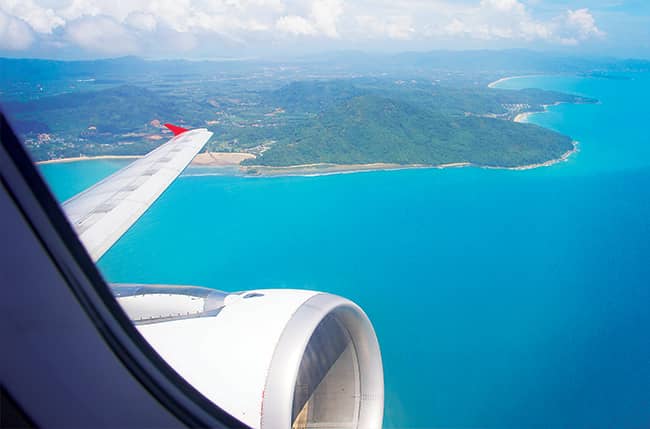Book NOW for $1 £1 €1 • Flexible Payments • No Change Fees • Private Departures Available
- Home >>
- Asia Travel Advice
Asia Travel Guide
Being the largest continent in the world - boasting a whopping 17 million square miles and 4.4 billion people - it can be difficult to write an all encompassing guide to this gigantic and drastically varied region of the planet. Trekking through the Himalayas is quite a different experience to unwinding on one of Southeast Asia’s white sand beaches, much like wandering busy city streets is different to hacking your way through thick rainforest. Although each trip to Asia can be utterly different from the last, here is a guide to the essential info that may help you on your adventure through any of our tour locations on this vast, mysterious land.
What are the main cities?
Other Noteable Cities in Asia
E-cigarettes in Asia
The use of E-cigarettes varies across the world with some countries in Asia completely banning them. We recommend checking with your local embassy before you go.
What are the main languages spoken in Asia?
Due to British Imperial rule in a variety of its nations until the 20th century and relatively high tourism rates, a lot of Asia speaks the English language to a basic standard. With over 700 spoken in India alone, a comprehensive list of Asian languages would be extremely long to say the very least. Here are the primary languages for each of the nations included in our tours.
Currencies
Each nation has a different official currency with drastically varying exchange rates. Withdrawing money in Vietnam gives one a brief taste of life as a millionaire! It is always a good idea to carry a few US dollars with you if you are travelling between different countries as they tend to be easier to exchange than any other foriegn currency.
What’s the deal with visas?
This information should be used as a guideline only. Each country has different requirements and travellers should check what these are before travelling to these nations. If you hold a UK passport then most visas for entry into Southeast Asian nations are available on arrival, exceptions include Burma and Vietnam (for periods over 15 days) which both require a visa to be obtained in advance.
China, India and Sri Lanka require visas to be obtained in advance, whereas visitors carrying a UK passport can organise visas upon arrival in Japan and Nepal.
Note that this is a rough guide to visa requirements and that visitors should research the requirements for each individual nation prior to leaving for their trip. Please use our Visa Calulator here.

Vaccinations
You should always consult a healthcare professional before travelling, but the CDC and WHO advise the following routine vaccinations to be up to date before a trip to Asia:
Other vaccines that may be recommended dependant on what you are doing during your trip include:
Note: Most Asian countries have some level of malaria risk, so it is advised that you take preventative medication and take precautions to avoid mosquito bites wherever possible in these regions.
Emergency Calls
It is always good practice to have important phone numbers stored on your phone in case of emergency.
Tipping in Asia?

Restaurants and Bars
As a general rule, tipping is not expected in most local restaurants and bars, however more upmarket establishments are more likely to expect a tip for excellent service. Tipping is more common in India, less so in China and in Japan it can even be considered an offense in some circumstances. Ask your guide for a better idea of whether or not you should tip during your trip.
Hotels
It is common practice in some nations to tip individuals who help with your luggage upon arrival at your hotel or hostel. Much like with restaurants and bars, higher end establishments may expect tips in return for good service.

Bartering
Bartering is a common practice throughout the majority of Asia, particularly in local markets. Not just a local way of life, bartering can be a lot of fun, particularly when you land what feels like the bargain of the century. It is important to remember to be polite and friendly when haggling with a local vendor. Each nation has a different attitude towards bartering, so we advise that you research the local haggling tendencies in case you inadvertently offend someone with your actions.
Visibly showing your excitement towards a particular item may result in a significant price hike, so always try and keep your cool when browsing the local wears. Buying various items together is typically a good way of justifying a discounted price on items.
Although it is good fun, you must always consider what each sale means to the locals. When arguing over a $1 difference in price, consider what that money actually means to you in comparison to what it could mean to the seller.

Solo female travellers
Typically solo female travel in Southeast Asia is very safe, due to the excellent tourist infrastructure as well as the large number of others in your situation, meaning the opportunity to find a travel buddy is never too far away. China and Japan are also typically considered safe for female solo travellers. Despite this it is always important to stay vigilant when travelling in these countries, as thievery and scams are relatively common, particularly in areas that draw a lot of tourists.
In terms of the Subcontinent, the warm hospitality of the locals is undeniable. Sri Lanka and Nepal are considered safe places to visit as a solo female traveller, whilst travelling in India may require a higher level of vigilance. That being said, as long as you use common sense there is no real reason that women travelling on their own should face any troubles whilst exploring these countries. Here are some basic safety tips for anyone looking to travel to Asia:

Wifi
In most areas, except for very rural locations, you will be able to connect to free wifi in hostels, hotels, cafes and restaurants.
Travel/mode of transport

Trains
A common form of transport in India, China and Sri Lanka in particular, trains can often prove unreliable in terms of timings and fluidity, however they can be an entertaining way to travel and great way to see vast sections of a country whilst commuting to your next stop, sampling the local culture as you ride the rail. Some train journeys in Asia have gained international renown as a highlight of any trip to the region in question.

Bus
Buses in Asia vary in terms of both size and quality. The difference in experience between the hot, rusty tin cans often found in India and the giant, swanky sleeper buses common in Southeast Asia is substantial to say the least. Buses run regularly and are typically quite timely. By far the most affordable mode of transport throughout most of Asia.

Aeroplanes
Given Asia’s gargantuan scale, flying can often be the most logical form of transport. Flights are often very affordable and there are a substantial number of airports throughout the continent, meaning most areas are readily accessible by flight. Definitely the preferred mode of transport for those looking to avoid spending hours upon hours sat on a local bus.

Car
Typically car hire in Asia is not common practice. In fact in some areas of China it is illegal for a tourist to hire a car. Given the chaotic and unpredictable nature of most Asian roads it is probably advisable to avoid car hire wherever possible. Public transport options typically offer an effective alternative in any case.
Motorbike
It is becoming increasingly common for people to rent, or even buy, motorbikes in certain areas of Asia. This is particularly common in Southeast Asian nations like Vietnam. Whilst it may be a fun way to try and navigate the hectic flow of bike traffic in Asia’s cities it can be dangerous if you have no prior experience riding a motorbike. Take this into consideration before getting your hands on one.




